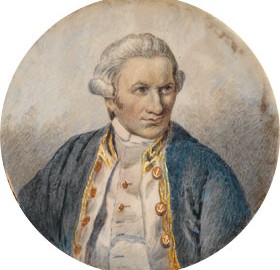Roughly 100 million years ago, major volcanic activity resulted in the formation of what are now known as the Whitsunday Islands. The drifting and collision of tectonic plates created landmasses–mountains, and valleys–that continued shifting throughout millions of years. After the last ice age, some 10,000 years ago, the seas rose, and The Whitsundays became the island chain which we see today. The beautiful sands of the islands are believed to have drifted from elsewhere, carried by ocean currents, as rocks native to the area do not contain the quartz found in the island sand.
The earliest inhabitants of The Whitsunday Islands were the Ngaro Aboriginal people. Archaeological evidence, as well as written accounts of early explorers, testify to the presence of the Ngaro, living and working on the islands as many as 9000 years ago. Highly adept at sea journeys, the Ngaro people were observed by some European settlers to embark on ocean expeditions covering more than 21 km. Also known as the “canoe people”, the Ngaro took to the sea in outriggers, and also constructed large canoes. Other archaeological finds, such as stone fish-traps, confirm that the Ngaro people had a strong relationship with the sea. They had a deep connection to the land as well; evidence suggests that the Ngaro made great use of the vegetation on the islands. They used plants for cooking and medicinal purposes, as well as for crafting tools and weapons. The hibiscus seems to have been used extensively, woven into nets, fishing lines, and ropes. Archaeologists believe the canoes of the Ngaro were made from bark from the island trees.
In the year 1770, English explorer Captain James Cook came across the Whitsunday Islands, as he sailed around Cape Conway and observed a string of islands. He named this passage “Whitsunday’s Passage”, so christened for the day he had arrived: Whit Sunday in the Christian tradition. (We now know that Cook did not actually arrive until Monday!) Cook named a few of the individual landmarks and islands he passed, including Pentecost Island. The remaining islands were not named until years later, by other nineteenth-century explorers.
European settlement of the island began in the 1860’s. The Ngaro people opposed this colonization, but eventually, leases to farming settlers were slowly granted. Some islands began to support successful sheep-grazing operations. The tourist industry did not boom until the 1920’s, when day trips from mainland Australia began shuttling passengers to the islands, and some resorts were founded. In 1927, the six Molle islands were purchased by Henry Lamond. He was fascinated by natural history and wrote articles about the islands which were published in the papers. This brought international exposure to The Whitsundays, and likely helped increase tourism.
In the late 1800’s, many Ngaro Aboriginal people were forcibly removed from the islands, and their culture was largely disrupted. Presently, few Ngaro descendants do still remain on the islands, and many are involved in the National Park Service. In the 1930’s, the government declared many of the islands to be national parks, and now the great majority of The Whitsundays, partially or fully, are designated as national parks. Hopefully these measures will help to protect and preserve these beautiful islands for thousands of years to come.


